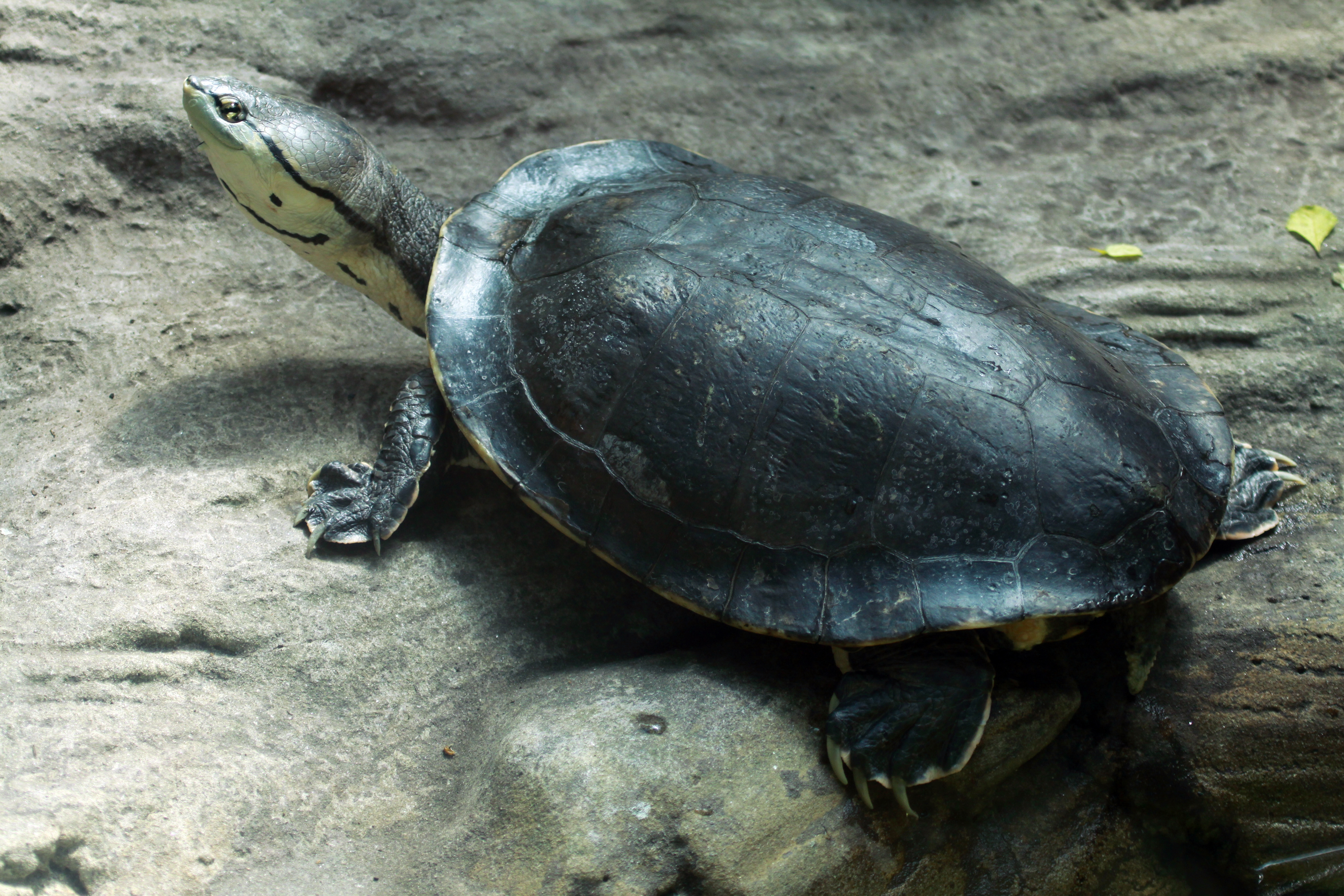Hilaire’s toadhead turtle
(Phrynops hilarii)

Description
Phrynops hilarii, commonly known as Hilaire’s toadhead turtle or Hilaire’s side-necked turtle, is a species of freshwater turtle in the family Chelidae. The species is endemic to South America. Phrynops hilarii has an oval, flattened carapace, with a maximum length of approximately 40 cm, weighing approximately 5 kg. The carapace is usually dark brown, olive, or gray, with a yellow border. The head is large and flat, gray to olive above, with a pointed snout and two bicolored chin barbels There is a black band on each side of the head, which comes out of the muzzle and passes over the eyes, going up to the neck. These turtles inhabit streams, lakes and swamps with abundant aquatic vegetation and soft bottoms. The specific name, hilarii, is in honor of French zoologist Isidore Geoffroy Saint-Hilaire. P. hilarii is found in southern Brazil (Santa Catarina and Rio Grande do Sul), southward and westward into Uruguay and Argentina, and possibly also in Paraguay and Bolivia. This omnivorous species mainly feed on arthropods, with a preference for copepods, ostracods, and hemipterans. They feed also on fish, birds, reptiles, small mammals and dead animals. It is oviparous. These turtles can live for up to 37 years. Females lay twice a year, one between February and May and the other between September and December. They lay from 9 to 14 eggs, with a maximum of 32 eggs and an incubation period of approximately 150 days. Sometimes called the bearded toadheads but better known by their scientific name of Phrynops this genus of turtles has often been a bit of a dumping ground for the short-necked South American turtles of the family Chelidae. The genus is widely distributed in South America found in the Orinoco to Amazon and São Francisco to Paraná and adjacent river basins of Colombia, Venezuela, the Guianas, Brazil, Paraguay, Uruguay and northeastern Argentina (Iverson, 1992). The phrynop turtle generally achieves thermoregulation through areal basking. In order to best attain their goal, they tend to increase their basking time during mid-day during the winters to make up for the cold. Other factors such as food intake and reproduction underwater also influence the way they control the temperature of their body. Although this is the main way they are able to maintain body temperature, food intake and reproduction rates are also influential in the matter.
Taxonomic tree:







